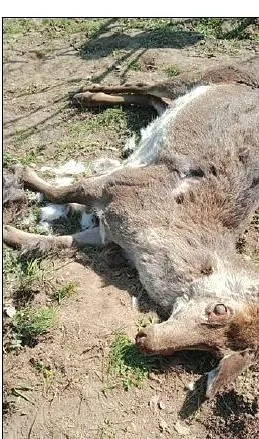Anantnag: The death of a female pregnant Kashmir stag- Hangul in Shikargah wildlife sanctuary of Tral area of south Kashmir, suggests its successful breeding in the area, experts believe. The carcass of the species was found early morning by the department of wildlife and taken in their custody.
After the autopsy, the Hangul was found to have fallen prey to a leopard. Wild life experts, however, term the incident as crucial for various studies.
“This time of the year pregnancy is usually in advanced stages. So, though accidentally but it is the first scientific evidence of breeding of Hangul outside Dachigam wildlife sanctuary. We needed it badly for studies crucial for the conservation of Hangul`,” Wildlife Warden Pulwama-Shopian, Suhail Intesar told Greater Kashmir.
Hangul is regarded as a highly endangered species. From the population of 5000 in the year 1900’s the Hangul numbers have constantly declined over the decades, making it confined to 141 sq Km Dachigam Wildlife sanctuary.
However, a study suggested that isolated Hangul herds of five to ten have been reported from adjoining areas of Dachigam which include Shikargah-Tral and the Overa-Aru Wildlife Sanctuary in the south Kashmir.
Three years back, the first photographic evidence of Hangul in Tral came to the fore when 14 of them were captured in a single frame. Known for its magnificent antlers, which can have 11 to 16 points, Hangul is the only surviving Asiatic sub-species of the European red deer family, found in Kashmir only.
The current population of the rare species is estimated to be around 190.
Dr Tanveer Ahmad, a doctorate in Wildlife Studies, Aligarh Muslim University (AMU) considers this natural breeding as a positive sign of habitat suitability.
“The male and female coming together in a habitat is good for the growth of species. It is also a natural selection across all species that they chose the season for pregnancy when there is enough food available for their offspring. So, if that female Hangul chose that area she had a fair idea there is sufficient vegetation available around, he said.
Ahmad said this indicates that parameters of reproduction are fulfilled.
“The department of wildlife should go for advanced studies for very interesting findings, ”he said.
Wildlife authorities claimed they have taken samples of both female stag and her fetus crucial for Hangul conservation.
“We are going for genetic profiling of Hangul across Kashmir, previously done in Dachigam only. But this Shikargah- Khiram- Overa-Aru habitat in south Kashmir is believed to be a different population, and whether it has an interaction with the Dachigam population has not been known yet. So, the samples will help us to establish that,” Intesar said.
He said the samples will be useful in finding genetic variations if any and derive maximum knowledge.
“There is no other way to determine the genetic makeup of wild animals other than by their tissue. The hair samples which we take don’t help in DNA profiling as such.” Intesar said.
He said: “ The samples would also be helpful in a couple of studies that are underway in collaboration with SKUAST (K) on the genetic and behavioural ecology of the animal.”
“The pathogenic study of the samples will also be carried, to ascertain any pathological problem in the specie and help in conserving Hangul population”.
He said, Hangul being a natural prey to the leopard in the ecological system also indicates the latter has enough of natural prey in the recently notified Tral wildlife sanctuary.
“At other places outside the protected area, the leopard usually preys on dogs and cattle. So, this is in consonance with the established fact that protected areas have better ecological health than unprotected ones,” he said. Intesar said leopard preying the animal is quite natural and not something alarming but since various studies are underway the samples would help in the long run.






